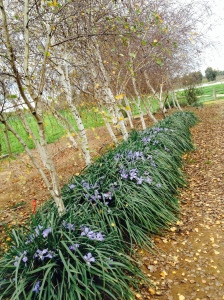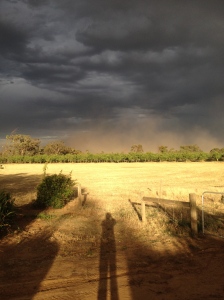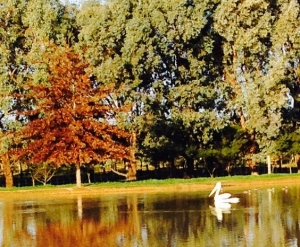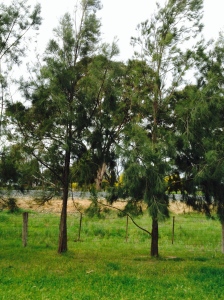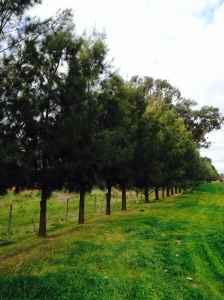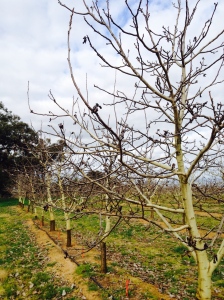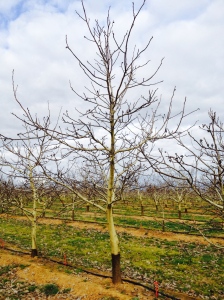Alberto, the Italian walnut expert, when he visited him at his farm, spoke of going to California as ‘ visiting the home of the wolf ‘. Californian walnut production dwarfs all other’s. Yet, we have always found California walnut farmers and manufacturers most helpful and welcoming. We visited California in 2012. From the start, even at the airport, the car-rental front-desk salesman upgraded us to a larger car at no extra cost when he learned we were heading for Yosemite. We visited the Florey plant at Salida and met Al. He took us to meet another Al who ran over 300 acres of walnuts nearby. We toured his orchard, production plant and museum of intriguing collectibles.
California resembles Australia in topography, climate and vegetation. Gums made it across the Pacific with the traffic between our two nations in the goldrush days of the 1850s.
When we returned to Oz we ordered a sweeper and harvester from Al. We have used them for two harvests.
On twitter we met @nutfarmerJake who has provided us with advice from time to time. Jake responded to my tweet yesterday regarding purchasing a sizer from the North Dakota manufacturer. I am sure my wife is presently sending the deposit via our bank.
The Weiss McNair general manager has stayed at our place and I have taken him on a tour of local walnut farms. He was most generous with this time and information.
The walnut farm three kms from us is owned by a man whose father was a US pilot. He spent many years on walnut ranches.
There are many, many links between the US and Oz walnut growers, processors and manufacturers. These links will grow.

